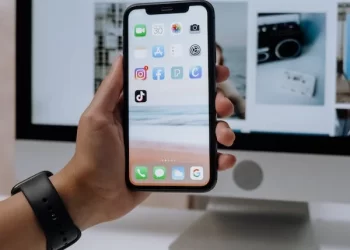The typical sales process goes like this:
First is prospecting. Salespeople identify leads through different means. Could be after an email outreach, cold call, referral, a request to speak to them or see the product demo.
Immediately after that, they decide if a lead is a good fit for their product or service by understanding the lead’s pain/needs, budget, decision-making process, etc.
They then pitch the product, explaining the features and benefits to show how it solves the lead’s pain points.
Next, they handle objections. It’s where they answer questions, address concerns, and reassure leads about the product’s capacity.
Next, they close the lead. But before this happens, a prospect has gone through all the sales funnels to ensure your product is right for them.
The buying process is long and complex, from awareness of your product to developing interest, researching on their own and eventually buying.
It could look something like this:
Or something like this:
Your sales team needs to educate, address pain points, and attract the lead to your product’s solution every step of the way.
But they can’t do it alone. You need content that helps sales. Content plays two significant roles in this context: It enables the sales team and guides the lead through the journey to becoming a buyer.
Your content needs to enable the sales team for two reasons.
- It points them to relevant materials to share with leads throughout the journey.
- It makes it easy for the sales team to articulate how the product works through existing product-led content, especially if you’re onboarding new salespeople.
You’ll learn other reasons as you dig into the piece.
5 Ways to Create Content that Helps Sales Team
- Create case studies/guides that show how existing customers use the product.
Case studies provide real-world examples of how the product has helped other customers overcome their challenges.
73% of successful marketers agree that it sees a prospect through the buyer journey, according to the Content Marketing Institute, because case studies show that your product works.
They show prospects the use cases and challenges companies like theirs faced and how your product solved the problem. They also offer a step-by-step guide on how they did it.
An in-depth, step-by-step guide is what Frontify created: Save 700k Per Year: How Brand Building With Software Can Save Companies More Than $700,000 a Year.
They broke the sections they’d talk about into 5:Source
They then discussed how their product helps companies save $700k annually through their brand building software.
It’s also how Clearscope wrote their case study: How Pipedrive Doubled their Website Traffic with Clearscope.
I once read a marketing agency case study on how they grew a client’s web traffic. They mentioned the employees involved in the different stages that led to the results. This type of case study is also great.
What it does is show prospects the individuals responsible for their projects, so these prospects may check them on LinkedIn, Google, or Twitter to understand their expertise. The portfolio of these employees may reassure them further.
However, how does case study and in-depth guide content help the sales team?
The content from Fronitify generated over 25,000 visits and 550 leads. In the words of Kevin Ailloud, the Head of Demand Generation at Frontify, the guide “allowed them (sales) to develop conversations with prospects around ROI in a more structured and supportive manner.”
The sales team needs content to refer prospects to after a call or a successful outreach.These must be something other than top-of-the-funnel content. This content must relate to their industry and pain point (if possible) and serve as a follow-up after the call.
For instance, it would thrill a prospect in Martech to see how your product has helped another Martech company achieve its goals. Salespeople can then refer to these case studies/in-depth guides to show how the product works to potential customers who need to see.
Caroline Forsey, manager of the HubSpot Marketing blog, says a good case study “includes a beginning — often discussing a conflict, an explanation of what happened next, and a resolution that explains how the company solved or improved on something.”
To create a super helpful case study:
- Focus on the customer’s story
- Lean on how your team helped, and
- Focus on the features + benefits that the customer received.
- Speak to the sales team and create content on the questions leads often ask when they talk to sales.
Your sales team knows customers’ concerns and questions about the product because they speak to them. You only get to create content that addresses these questions by speaking to the sales team.
I stumbled on Content Camel a few days ago. It’s a product that lets you sync communication and blog posts with the sales team and prospects. I won’t go into details about the latter.
For the sales team, here’s what I mean.
The content published by the marketing team is automatically updated on Content Camel to carry the sales team along. The content can also be grouped category by category, making it easy for sales to wade through your content library to find what applies to a lead.
The sales team can also log on to their account on Content Camel to make a content request from the marketing team. Here’s what that looks like:
In the Make a Wish box, the salesperson can fill in the height of urgency, with options between “Need” and “Urgently Need”. They can also mention the content type they need — dataset, paper, case study, eBook, etc. There’s an option to state why they need it, the suggested title, and what the content needs to contain.
That’s how content helps sales.
I’m not related to Content Camel in any way: I don’t freelance with them (would be great to), nor do I have a relationship with the founders.
But imagine that the content you’re reading is a how-to content, and I just plugged my (read “their”) product in.
A reader interested in how Content Camel helps the content team enable sales (and vice versa) may want to learn more about the product and eventually pay for an account.
The point of my example is: Let the sales team communicate their needs so they can always reference the content you create when they speak to leads.
- Create bottom-of-the-funnel (BOTF) content that shows how the product works.
I read a BOTF content about customer onboarding from a SaaS company. The piece explained how SaaS brands could onboard their customers but didn’t mention how their product does it.
The writer plugged a paragraph about how the product works at the foot of the content where fewer readers care. That’s not what a BOTF content should do.
The best BOTF piece doesn’t just solve problems. They show how the product works to explain why it’s better than market alternatives.
Your how-to pieces should include screenshots, gifs, and short videos of your product in action, and how it solves a challenge.
For example, if you own a tool that helps content managers sync their work with executives, sales teams, and others (like Content Camel), your BOTF content must show screenshots and short videos of how it does.
In a recent Salesforce announcement about adopting ChatGPT in Slack DMs, they released a gif about how it’ll work.
Here’s another example from Rainforest, a no-code QA testing tool. Their post is about the top automated testing tools in the market.
It didn’t just say, “Hey there, our product is the best because it’s got pixel matching, a video playback to let you see which part of your code broke during fixing, etc.”
Nah.
Instead, it explained why the product is the best and provided screenshots + videos showing how the features work.
Here’s what that looks like:
Here’s another clip:
For your content to help sales, your BOTF posts must be product-led.
This doesn’t mean you should plug your product into every BOTF piece. Your product shouldn’t feature if you’ll struggle to make it seem natural.
How does content help the sales team?
Your sales team can include links to these pages while communicating with prospects. In a Dock case study, the Director of Sales at Nectar mentions that these are what they have in a follow-up:
You may include BOTF pieces that will resonate with the prospect and other content that shows the product in action. That’s because your prospects must understand how to maximize the hell out of your product.
- Create content that circles all sales funnel stages, say a content library touching every angle.
“Readers don’t strictly move through a funnel. It (the buyer’s journey) is a non-linear, I’ll read what-I-like-in-no-particular-order journey,” says Masoomah Memon, a strategist and writer for B2B brands.
Here’s why she said that:
Your content must serve pre-purchase and post-purchase purposes. It must create awareness, nurture and engage your audience (read prospects), show how your product works, and help them know why you’re the best.
It must also clear all doubts and encourage them to buy. A marketing leader once said, “You need to have content for people who are not yet customers, content for people who are close to becoming customers, and content for people who are already customers.” That’s how content helps sales.
All these mean that you should create educational and sales-focused content, e.g. product demos, comparison pages, and tutorials (if your product is quite complex to set up).
- Use data to inform your content strategy
Use data is becoming a buzzword, but I’m not in that party, I assure you.
Data informs strategies, and tracking metrics like website traffic, engagement rates, and conversion rates, can help you spot which types of content resonate with your audience so you’d adjust your strategy accordingly.
After all, I think it was Rand Fishkin who said, “the best content is that which speaks to the needs and desires of your audience.” To me, the best content also helps sales, and data can be the vehicle.
Here’s what I mean in 3 points:
- Data helps you understand your audience through insights into the demography and interests. I don’t need to explain this.
- Data helps you track content performance: By monitoring content performance in terms of traffic, engagement, and conversions, you can identify what’s working and what needs to be improved.
You must constantly test and measure your content to see what’s resonating with your audience.
For example,
- Which posts converted readers the most?
- Which page is the last touch point that motivated the purchase or request for a demo/sales call?
- How can you amp up research & content that could achieve more results?
These can help you refine your content strategy over time and create more compelling content driving sales.
- Data helps you spot gaps and opportunities: You need to analyze the trending keywords and topics to identify gaps in your content library. Then create content that differentiates your company/product.
For instance, if you’re a marketing agency and everyone is leaning towards AI content writing tools, do a comprehensive case study comparing the quality your team can produce to what AI does.
Take it a step further: publish the pieces and show results on which ranked and converted more. You can take both contents to LinkedIn and Twitter polls and watch people choose which they resonate with the most.
Rounding up on Creating Content that Helps Sales
Creating content that helps sales requires a profound understanding of your audience and their needs. It’s one thing to have nailed the user research/buyer persona, it’s another thing to have the resources to take them from stage 1 to the last stage. If you need help creating content that helps sales and convert readers, talk to me on LinkedIn.










